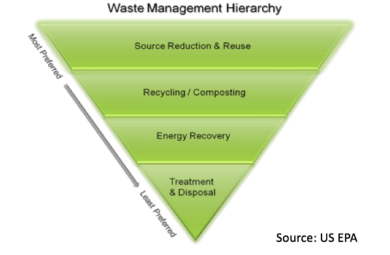Introduction: We are faced with many challenges in how waste is managed in the US. Some areas do a little better, some worse. There are lofty goals that are not met, and we hit major barriers. This trip will introduce you to a highly efficient Integrated Waste Management System (IWMS) already implemented in several European countries. Through face-to-face meetings with legislators, policy makers, and agency officials, as well as visits to waste management facilities, you will see first-hand…
FOR IMMEDIATE RELEASE If you care about your family’s health and well-being. If you are searching for an answer to Climate Change. If something doesn’t sit right inside every time you pass a massive landfill. If you are hoping for a healthier, cleaner world, you must read this book. Where do our toxic wastes go? Who is monitoring their disposal? Does a solution exist to create carbon neutral Emissions form toxic waste? YES!!! SLUDGE TRACKER: Toxicus…

While we favor a circular economy without landfilling or WTE/Incineration the nature of society (and consuming) does create waste that cannot be avoided or recycled. In that case waste should first be made inert, toxics destroyed, and materials and energy recovered so that landfilling, the worst option for dealing with waste, can be avoided by all means possible.
…
In short: Mankind can only exist in the long term with a circular economy. Landfilling means the collapse of our economic system in the long term. Only a circular economy is sustainable. Thermal waste treatment with advanced flue gas cleaning and residue processing is part of a circular economy to optimize (maximize) the material recycling of waste. Note: Energy production is not the focus here (therefore we should part from the term WtE, as it undermines the main purpose of thermal waste treatment), because regenerative energy is available in abundance, you just have to use it.
While we favor a circular economy without landfilling or WTE/Incineration the nature of society (and consuming) does create waste that cannot be avoided or recycled. In that case waste should first be made inert, toxics destroyed, and materials and energy recovered so that landfilling, the worst option for dealing with waste, can be avoided by all means possible.
…
Mankind can only exist in the long term with a circular economy. Landfilling means the collapse of our economic system in the long term. Only a circular economy is sustainable. Thermal waste treatment with advanced flue gas cleaning and residue processing is part of a circular economy to optimize (maximize) the material recycling of waste. Note: Energy production is not the focus here (therefore we should part from the term WtE, as it undermines the main purpose of thermal waste treatment), because regenerative energy is available in abundance, you just have to use it.
Unfortunately, these extreme events, and the conditions they foster – flooding, wildfires, property damage, loss of life – are becoming the new normal, thanks to global warming. And there are other, less obvious but equally damaging, effects as well. As the ocean warms and becomes more saturated with carbon dioxide, fish and other creatures in the marine food chain are adversely affected. Diseases once limited to the tropics are spreading into the temperate zones. Coastlines, from Louisiana to Alaska, are receding, due to more frequent and more powerful storms, rising sea levels, and, in Alaska, the loss of sea ice. The message should be clear: we are running out of time to turn this trend around. Even insurance companies have stopped insuring the homes in particularly affected areas.
…
What can be done now to reduce emissions relatively quickly? The answer is simple: the US must stop landfilling untreated municipal solid waste. A recent (July, 2020) article in the journal Environmental Health and Safety stated that with regard to waste management, “Landfilling is the most greenhouse gas (GHG)-intensive option, emitting nearly 400 kg CO2e per tonne of organic waste…the GHG footprint of landfilling organic waste is higher relative to composting or waste-to-energy by as much as a factor of 9, even when landfill gas is captured and utilized.”
